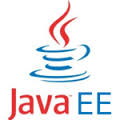Introduction JCA, the J2EE Connector Architecture, is an initiative towards EAI, Enterprise Application Integration. It is a standardized architecture providing the J2EE Components to have plug and play access to heterogeneous EIS, Enterprise Information Systems. Examples of EIS are ERP (Enterprise Resource Planning), Transaction Processing Systems, Legacy Database Systems etc. In the following section we …
Java EE
Sample Application for Java Persistence API (JPA)
This article is the last part of the article series Java Persistence API (JPA), the earlier articles are introduction to JPA and the query api in JPA. This article is only for explaining the sample program with concepts used in the previous articles. I would recommend reading the previous two articles before start analyzing this …
Introduction to Java Persistence API(JPA)
Introduction Java Persistence API (JPA) provides POJO (Plain Old Java Object) standard and object relational mapping (OR mapping) for data persistence among applications. Persistence, which deals with storing and retrieving of application data, can now be programmed with Java Persistence API starting from EJB 3.0 as a result of JSR 220. This API has borrowed …
EJB 3.0 Timer Services
Starting from EJB 2.1, Timer Services are available for building J2EE Applications that depends on time based services. Time based services are mostly used in scheduling applications. Technically, these scheduling applications are called workflows. also read: Java EE Tutorials EJB Interview Questions EJB 3 Web Services Annotation and Dependency Injection in EJB 3 Query API …

